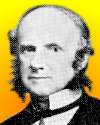
On 25 Sep 1878, a letter warning against the use of tobacco, Dr. Charles Drysdale, senior physician to the Metropolitan Free Hospital, was published in The Times newspaper in Britain. He pointed to “the enormous consumption of tobacco in all European states,” and concluded “that the use of tobacco is one of the most evident of all the retrograde influences of our time.”
Years earlier, in 1864, he published in Med. Circular results of excessive use, such as cases of jaundice in healthy young men smoking 3/4-oz daily, and a young man who smoked 1/2-oz daily having “most distressing palpitation of the heart.”
If you are amazed that the dangers of tobacco were being pointed out so much more than a century ago, you will be interested how research on the harmful chemicals in tobacco smoke were already well-known when he wrote he wrote his book, Tobacco and the Diseases It Produces, in 1875.
In an extract from that book, the section on Tobacco Chemicals lists harmful pyridine bases found in the products of decomposition of nicotine. Particularly notable is his recognition, over 135 years ago, of the dangers of passive smoking to non-smokers inhaling tobacco smoke in public rooms.

On 25 Sep 1878, when Dr. Charles Drysdale's warning against the use of tobacco was published in The Times newspaper in Britain, he had, years before in a journal article in 1864, already detailed the results of excessive use of tobacco. Today's book pick is: Tobacco: A Cultural History of How an Exotic Plant Seduced Civilization, by Iain Gately, who picks up the history of tobacco from when it was first cultivated and enjoyed by the indigenous inhabitants of the Americas using it for medicinal, religious, and social purposes long before the arrival of Columbus. Gately makes the case for the tobacco trade being the driving force behind the growth of the American colonies, the foundation of Dutch trading empire, the underpinning cause of the African slave trade, and the financial basis for our victory in the American Revolution. Informed and erudite, Tobacco is a vivid and provocative look into the complex history of this demon plant. The author is an afficiando of tobacco, and all too often his disdain for the anti-smoking movement is obvious. However, he balances his text so it remains a historical explanation. Thus, anyone interested in the origins of the smoking jacket, snuff horns, strike-anywhere matches, meerschaum and briar pipes, or curious about why most signers of the Declaration of Independence were tobacco farmers will not only enjoy this work, but come away with a larger understanding of why tobacco has been so important in human history.
It is available from Amazon, typically about New from $5.99. Used from $3.50. (As of earlier time of writing - subject to change.)
 | All infections, of whatever type, with no exceptions, are products of parasitic beings; that is, by living organisms that enter in other living organisms, in which they find nourishment, that is, food that suits them, here they hatch, grow and reproduce themselves. |
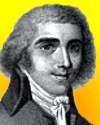 | The science of fossil shells is the first step towards the study of the earth. |
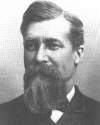 | In scientific study, or, as I prefer to phrase it, in creative scholarship, the truth is the single end sought; all yields to that. The truth is supreme, not only in the vague mystical sense in which that expression has come to be a platitude, but in a special, definite, concrete sense. Facts and the immediate and necessary inductions from facts displace all pre-conceptions, all deductions from general principles, all favourite theories. Previous mental constructions are bowled over as childish play-structures by facts as they come rolling into the mind. The dearest doctrines, the most fascinating hypotheses, the most cherished creations of the reason and of the imagination perish from a mind thoroughly inspired with the scientific spirit in the presence of incompatible facts. Previous intellectual affections are crushed without hesitation and without remorse. Facts are placed before reasonings and before ideals, even though the reasonings and the ideals be more beautiful, be seemingly more lofty, be seemingly better, be seemingly truer. The seemingly absurd and the seemingly impossible are sometimes true. The scientific disposition is to accept facts upon evidence, however absurd they may appear to our pre-conceptions. |
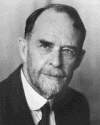 | That the fundamental aspects of heredity should have turned out to be so extraordinarily simple supports us in the hope that nature may, after all, be entirely approachable. Her much-advertised inscrutability has once more been found to be an illusion due to our ignorance. This is encouraging, for, if the world in which we live were as complicated as some of our friends would have us believe we might well despair that biology could ever become an exact science. |
| Before you look at today's web page, see if you can answer some of these questions about the events that happened on this day. Some of the names are very familiar. Others will likely stump you. Tickle your curiosity with these questions, then check your answers on today's web page. | |
| Births | |
 | Thomas Chrowder Chamberlin, born 25 Sep 1843 was a U.S. geologist and educator, known for his “planetesimal hypothesis,” proposed with Forest Ray Moulton in 1904. What was his planetesimal hypothesis? |
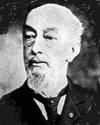 | William Le Baron Jenney, born 25 Sep 1832, was an American civil engineer and architect whose technical innovation made possible the development of the skyscraper. His Home Insurance Building in Chicago was one of the first buildings with the innovation which became the standard for American skyscraper design. What was his important innovation that made a skyscraper possible to build? |
| Deaths | |
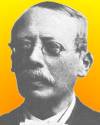 | Hieronymus Theodor Richter (1824-1898) was a German metallurgist who co-discovered an element. He was assistant to Ferdinand Reich who suspected a new element was present in the samples of zinc ore he had chemically processed, but was too colourblind to do the spectroscopic analysis. That Reich turned over to Richter. Viewing a sample on a loop of platinum wire eated in a Bunsen flame, Richter saw a brilliant indigo spectral line which confirmed the presence of a new element. Which element did Richter assist in discovering? |
| Events | |
 | On 25 Sep of a certain year, scientists first reported that freon gases released from aerosol spray cans were destroying the ozone layer. In what decade did this occur? |
 | On 25 Sep 1956, when a new transatlantic cable system began operating (between Clarenville, Newfoundland and Oban, Scotland) it was a world's first. What made it the world's first, different from previous cables? |
Fast answers for the previous newsletter for September 24: carbon and hydrogen (CH radical) • neon light • Hans Geiger • decade containing the year 1960 • steam engine.
 If you enjoy this newsletter, the website, or wish to offer encouragement or ideas, please send feedback by using your mail reader Reply button.
If you enjoy this newsletter, the website, or wish to offer encouragement or ideas, please send feedback by using your mail reader Reply button. Your click on a Facebook, StumbleUpon, or other social button on the site webpages is also a welcome sign of appreciation. Thank you for using them.
© This newsletter is copyright 2020 by todayinsci.com. Please respect the Webmaster's wishes and do not put copies online of the Newsletter — or any Today in Science History webpage. (If you already have done so, please remove them. Thank you.) Offline use in education is encouraged such as a printout on a bulletin board, or projected for classroom viewing. Online, descriptive links to our pages are welcomed, as these will provide a reader with the most recent revisions, additions and/or corrections of a webpage. For any other copyright questions, please contact the Webmaster by using your mail reader Reply button.
--
If you do not want to receive any more newsletters, Unsubscribe
To update your preferences and to unsubscribe visit this link
Executive Real Estate Business Class
-
"It was like a man with wings. It wasn't like anything you'd see on TV or in a monster movie." ...
About the publisher
Search This Blog
Blog Archive
-
▼
2020
(1542)
-
▼
September
(173)
- SCIENCE: Just how big is Everest?
- The Latest News from History News Network
- On This Day for September 30 - Munich Agreement si...
- We are called to return to our foundational values...
- Newsletter for Wednesday 30 September.
- They Killed His Wife And Left Him For Dead – Then ...
- TRAVEL: Telling new truths about America’s histori...
- Make learning fun with Nat Geo Kids magazine! Subs...
- On This Day for September 29 - British mandate in ...
- Newsletter for Tuesday 29 September.
- Special Edition: Dinosaurs come to life like never...
- September 29: On This Day in History
- HISTORY: America's most endangered historic sites
- New This Week on History News Network
- On This Day for September 28 - California “discove...
- Newsletter for Monday 28 September.
- September 28: On This Day in History
- FAMILY: What do I tell my kids about wildfires and...
- On This Day for September 27 - Norman Conquest beg...
- Newsletter for Sunday 27 September.
- September 27: The Rosetta Stone, E=mc² and Fear as...
- The Compass: Indonesia
- On This Day for September 26 - First televised U.S...
- Newsletter for Saturday 26 September.
- September 26: Frances Drake's Circumnavigation, th...
- CORONAVIRUS UPDATE: Is this the end of the office?
- PHOTOGRAPHY: They feed us. Now we see them.
- The assassination of Lord Mountbatten | Enola Holm...
- 39,500-Year-Old Cave Bear Discovered Perfectly Pre...
- On This Day for September 25 - Pacific Ocean sight...
- The Roundup Top Ten for September 25, 2020
- Newsletter for Friday 25 September.
- September 25: Battle of Stamford Bridge, Remote Co...
- ANIMALS: These mighty elephants find peace
- On This Day for September 24 - Federal troops sent...
- Newsletter for Thursday 24 September.
- Global cartels taking control of the world + HPA B...
- September 24: Decline of the Byzantine Empire, Ope...
- YOUR WEEKLY ESCAPE: America's oldest mystery
- SCIENCE: How to cope with a big death toll
- The Latest News from History News Network
- On This Day for September 23 - Neptune observed, J...
- Newsletter for Wednesday 23 September.
- September 23: Nintendo, the Start of Data Processi...
- TRAVEL: How will America’s state parks survive?
- Matching gift opportunity for Sumatran rhinos
- On This Day for September 22 - Solidarity formed, ...
- Newsletter for Tuesday 22 September.
- September 22: Salem Witch Trials, Iraq's Invasion ...
- HISTORY: Who can replace RBG?
- Feed their curiosity! Get Nat Geo Kids magazine fo...
- New This Week on History News Network
- On This Day for September 21 - Joseph Smith's visi...
- Newsletter for Monday 21 September.
- September 21: France, China and a Sheep Shearing R...
- FAMILY: Don’t tell your kids outdated stuff about ...
- On This Day for September 20 - Rome incorporated i...
- Pro-life is not Politics + Vickie Travis's message...
- Newsletter for Sunday 20 September.
- September 20: Attila the Hun, Magellan's Circumnav...
- The Compass: Chile
- Matching gift opportunity for Sumatran rhinos
- On This Day for September 19 - George Washington's...
- Newsletter for Saturday 19 September.
- CORONAVIRUS UPDATE: Young people are spreading the...
- September 19: 1st Country to Grant Women the Right...
- PHOTOGRAPHY: How to make dinos look new (CORRECTED)
- Quick Note: How to Save Videos by Downloading
- PHOTOGRAPHY: How to make dinos look new
- The Mayflower | Medieval spiders | Ancient Egypt f...
- When She Found Out Her Boyfriend Was A Serial Kill...
- The Roundup Top Ten from History News Network
- On This Day for September 18 - Mukden seized by Ja...
- Newsletter for Friday 18 September.
- "Truth Crushes Evil" + We're Winding down + What ...
- YOUR WEEKLY ESCAPE: The country that doesn't exist
- September 18: Great Fire of Moscow, the CIA and El...
- ANIMALS: How U.S. officials stopped the flying squ...
- Two New Podcasts From HISTORY
- Don't miss out: back to school savings for learner...
- On This Day for September 17 - Camp David Accords ...
- Newsletter for Thursday 17 September.
- September 17: Bloodiest Day in the American Civil ...
- SCIENCE: He found part of a one-of-a-kind dinosaur
- SPECIAL REPORT: How the West is primed to burn
- The Latest News from History News Network
- On This Day for September 16 - Mayflower's departu...
- Newsletter for Wednesday 16 September.
- September 16: French Abolish Slavery, Malaysia For...
- TRAVEL: Will slowing down help you get stronger?
- Special Report: How do we end this pandemic?
- On This Day for September 15 - Central Americans g...
- Newsletter for Tuesday 15 September.
- September 15: Darwin Reaches the Galapagos, Penici...
- HISTORY: How the U.S. battled catastrophic wildfir...
- BREAKING NEWS: Possible evidence of life found on ...
- Discover Remarkable Leaders With Nat Geo History M...
- On This Day for September 14 - Mexico City capture...
- New This Week on History News Network
- Newsletter for Monday 14 September.
-
▼
September
(173)
-
Blogroll
-
About
HistoryFact










0 comments:
Post a Comment